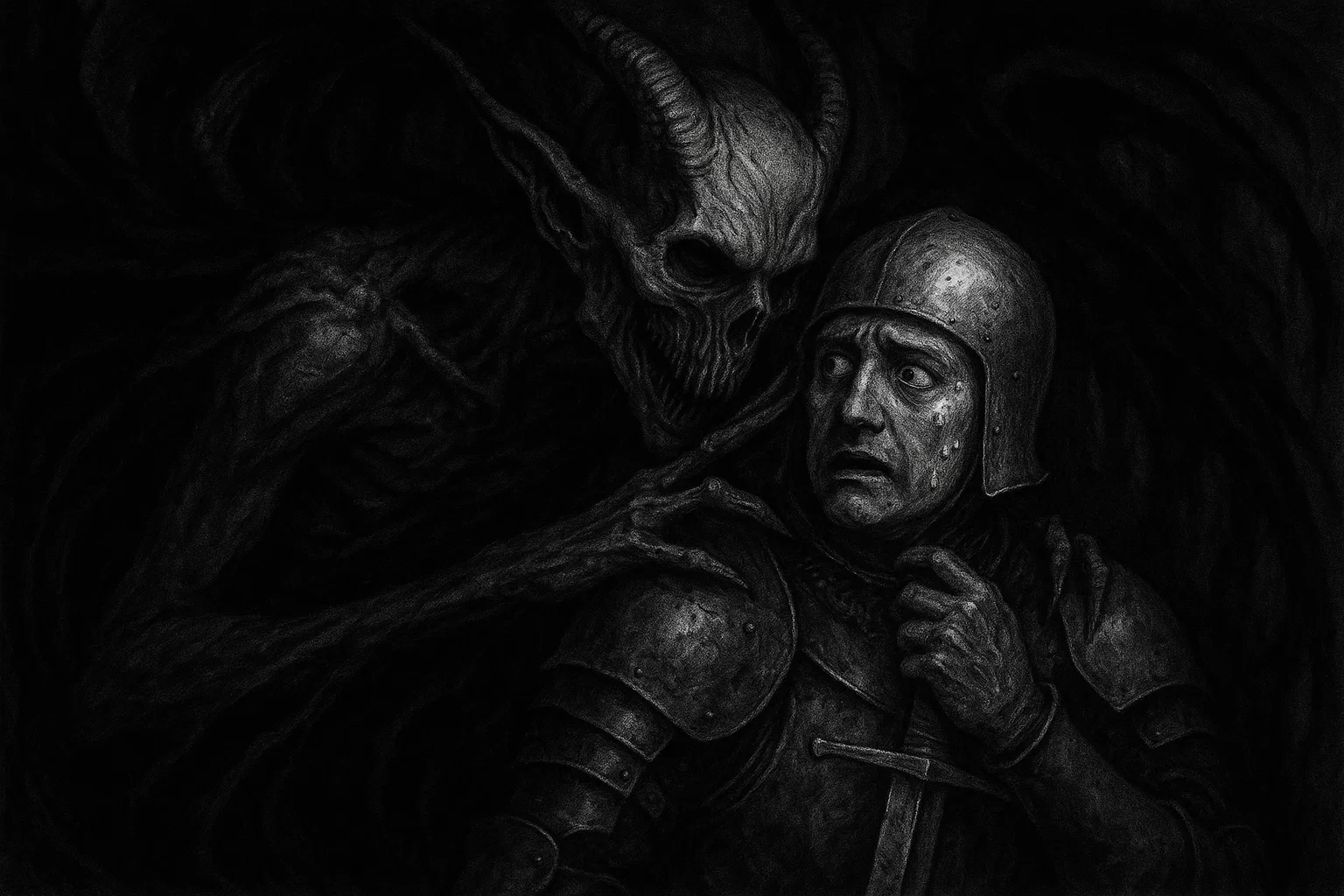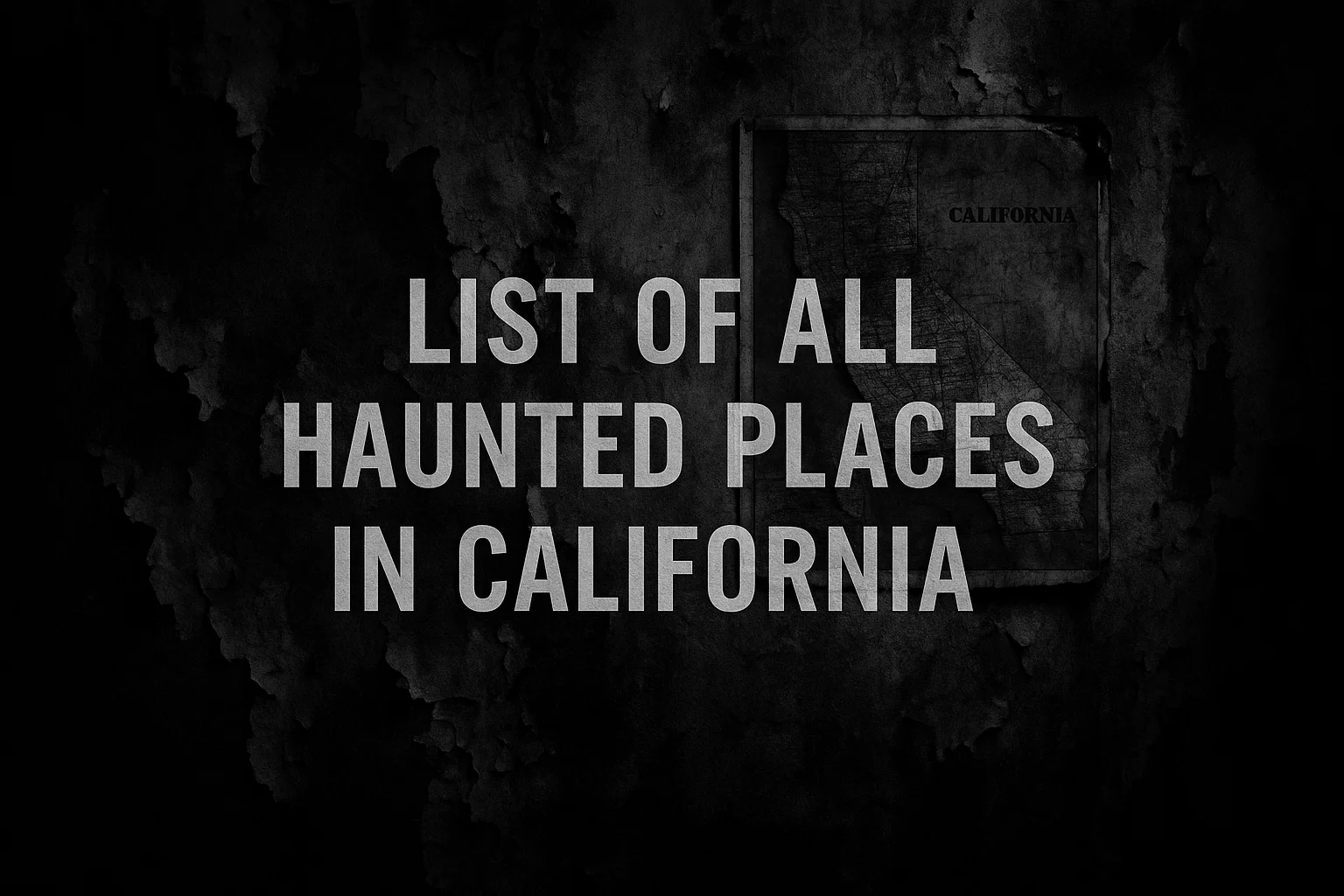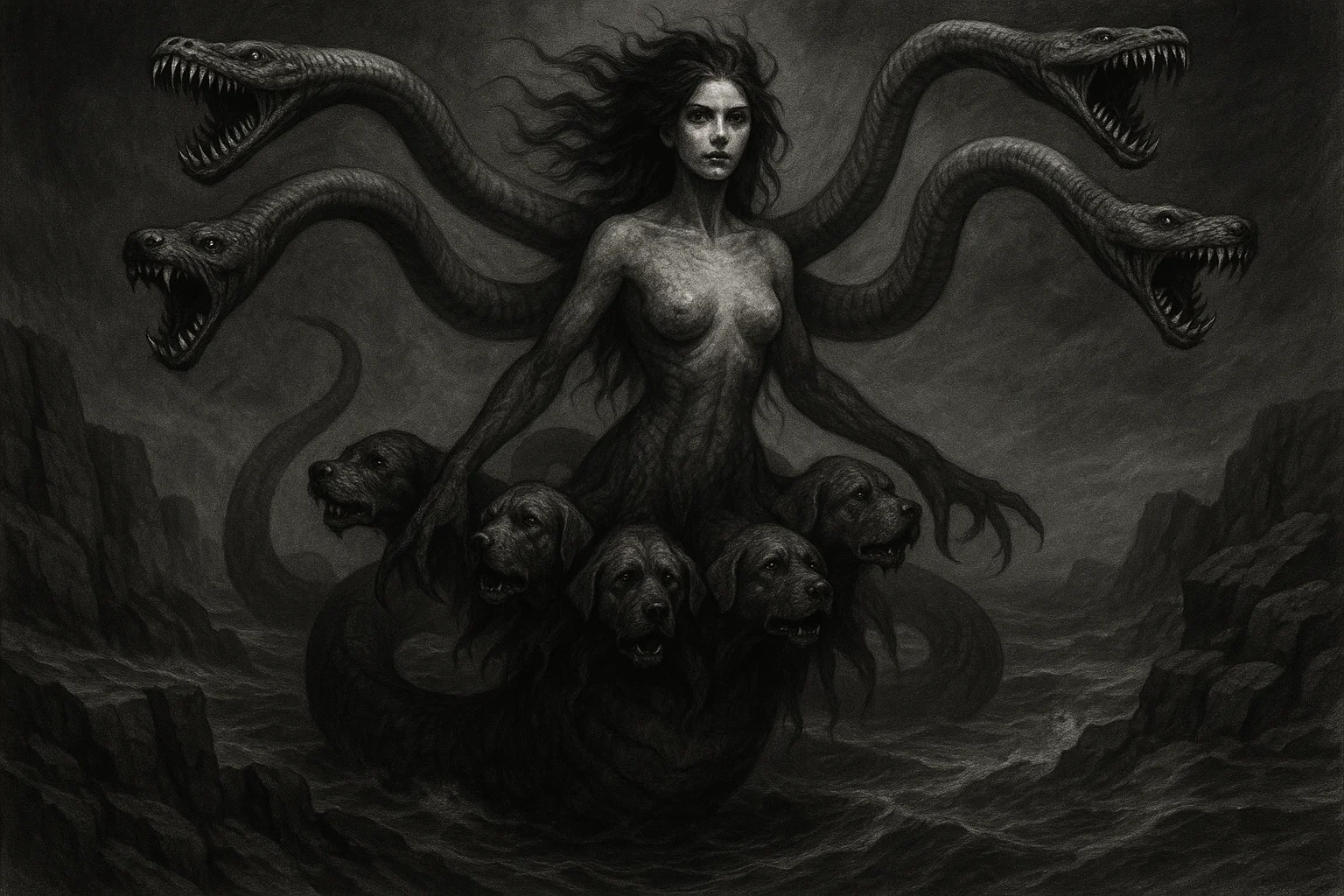In the dark recesses of demonology, where shadows whisper secrets of chaos and destruction, Eligos reigns as a malevolent force, a Great Duke of Hell whose name evokes terror and intrigue. Known also as Abigor or Eligor, this demon commands legions of infernal spirits, weaving webs of deceit and bloodshed. What if a spectral knight could foresee the carnage of future battles, twisting fates to sow discord among mortals?
This infernal entity, steeped in ancient grimoires and forbidden lore, lures the ambitious with promises of hidden knowledge and unholy alliances. Can Eligos truly grant favor from the mighty, or does his touch only corrupt and doom those who summon him? As a harbinger of war and manipulator of desires, he embodies the perilous allure of demonic power, drawing seekers into eternal peril.
Explore the chilling depths of Eligos’s dominion, from his origins in primordial myths to his role in the hierarchy of Hell. This article uncovers the layers of his malevolence, revealing how this demon has haunted human imagination across centuries. Delve into the mysteries of Eligos, the demon of warfare and concealed truths, and confront the darkness he unleashes.
Summary
Key Information
| Attribute | Details |
|---|---|
| Name | Eligos, Abigor, Eligor, Alugor, Allogor, Algor, Huwawa (possible ancient alias) |
| Title | Great Duke of Hell, Grand Archduke of Hell, Marquess of Hell, Demon of the Battlefield, Demon of the Mind, Winged Rider, The Visible and Invisible, The Strategist, Djinn of Shockwaves, The Merciless, Warrior Demon, Keeper of Hell’s Mindscape |
| Gender | Male |
| Role | Instigator of warfare, revealer of destructive secrets, corrupter of favor and love, tempter in legal deceptions |
| Hierarchy | Great Duke of Hell, commands 60 legions of demons |
| Servitors | 60 legions of lesser demons, including unnamed infernal warriors and spies |
| Superior Demon | Beelzebub, Fleurety (Lieutenant General), Lucifer |
| Powers | Foresees future wars to incite chaos, reveals hidden secrets for manipulation, procures corrupt favor of lords and knights, kindles obsessive love, aids in deceitful legal disputes, provides treacherous strategic counsel, telekinesis, possession, shapeshifting |
| Appearance | Handsome knight in a red coat and copper helmet, carrying a lance, ensign, and scepter (or serpent); alternatively, a ghostly specter on a semi-skeletal, winged horse (Steed of Abigor); in some forms, a skeletal composite of rival entities |
| Etymology | Derived from Hebrew “Eli” (divine/elevated) and “gos” (counsel/advisor); linked to Mesopotamian Huwawa/Humbaba, guardian of ancient forests |
| Associated Figures | Beelzebub (master), Fleurety (superior), Bael (ally), Berith (ally), Vaal (aid), Lucifer (overlord), Sargatanas (comrade), Immanuel (adversary angel), Michael (angelic foe), Ghost Rider (infernal rival), Hariel (opposing angel) |
| Weaknesses | Susceptible to invocations of Hariel, divine rituals, iron bindings, and unwavering faith |
| Opposing Angel/Saint | Hariel (Kabbalistic angel), Archangel Michael |
| Equipment/Tools | Lance, ensign, scepter (or serpent), Steed of Abigor, infernal standard |
| Pantheon | Christian Demonology, Goetic Tradition, Mesopotamian influences, Infernal Hierarchy |
Etymology
The name Eligos harbors profound linguistic roots, intertwining Hebrew origins with ancient Mesopotamian echoes, underscoring his role as a deceptive advisor in the infernal realms. In Hebrew, “Eli” signifies “god” or “elevated,” while “gos” or “gosh” may derive from terms implying “counsel” or “harsh judgment,” painting Eligos as a fallen divine counselor twisted into malice. This etymological blend suggests an entity once associated with wisdom but corrupted into a harbinger of ruin.
Scholars trace Eligos further back to Huwawa or Humbaba, a fearsome guardian in the Epic of Gilgamesh, a Mesopotamian epic from around 2100–1200 BCE. Humbaba, appointed by the god Enlil to protect the Cedar Forest, embodied terror and power, much like Eligos’s martial ferocity.
The name evolution—through variants like Abigor, Eligor, Alugor, Allogor, and Algor—reflects transliteration variances across Latin, Arabic, and European manuscripts, common in occult texts where scribal errors amplified demonic mystique.
These aliases highlight Eligos’s adaptability in demonological lore, possibly influenced by Arabic “djinn” traditions where similar entities wield shockwaves of destruction. The connection to Humbaba implies Eligos as a syncretic figure, merging Sumerian monster myths with Judeo-Christian demons, symbolizing the transition from ancient guardian spirits to infernal dukes.
This etymology not only reveals his ancient pedigree but also his enduring capacity to evolve, ensnaring souls across epochs with false promises of enlightenment.
Further exploration reveals potential links to Indo-European roots, where “eli” aligns with elevation or divinity, and “gor” evokes heat or fury, aligning with his fiery, warlike nature. In Goetic traditions, such names invoke power, but Eligos’s moniker serves as a warning: invoking it risks unleashing uncontrolled chaos, as his counsel often leads to self-destruction.
You May Also Like: Decarabia: Pentagram Spirit of the Ars Goetia
What Does the Demon Eligos Look Like?
Eligos manifests as a dashing yet ominous knight, clad in a crimson coat and gleaming copper helmet, exuding an aura of false chivalry that belies his sinister intent. He rides the Steed of Abigor, a grotesque, semi-skeletal horse with ethereal wings, its form decaying yet swift, symbolizing death’s relentless advance. In his grasp, a lance pierces illusions, an ensign waves deceit, and a scepter—or writhing serpent—commands infernal forces.
Alternative depictions portray Eligos as a spectral phantom, his knightly facade dissolving into a skeletal amalgam of rival demons’ bones, emphasizing his composite, predatory essence. This duality—noble warrior and horrifying wraith—mirrors his manipulative prowess, luring victims with grandeur before revealing his true, nightmarish visage.
Historical and Mythological Background
Eligos’s origins delve into the primordial chaos of ancient mythologies, where he emerges as a corrupted guardian spirit, evolving into a demon of unparalleled malice in Christian demonology.
His earliest connections trace to Mesopotamian lore, particularly Humbaba in the Epic of Gilgamesh, a colossal being tasked by Enlil to safeguard sacred cedars. This ancient entity, with seven auras of terror, parallels Eligos’s ability to instill fear and foresee conflicts, suggesting a syncretic fusion as myths migrated westward.
As civilizations intertwined, Eligos may have absorbed traits from other deities. In Hittite mythology, storm gods like Tarhunna wielded weapons akin to Eligos’s lance, while Egyptian war deities such as Montu embodied strategic destruction.
Greek influences could link him to Ares, god of war, whose chaotic battles mirror Eligos’s incitements. Even Norse Valkyries, choosers of the slain, share his foresight in warfare, hinting at cross-cultural borrowings where demons embodied universal fears of conflict.
In Judeo-Christian narratives, Eligos is a fallen angel, cast down during the War in Heaven. Once a celestial strategist, his rebellion against divine order twisted him into an agent of discord.
The War in Heaven and Fall from Grace
Amid the celestial revolt led by Lucifer, Eligos served as a tactical mastermind, orchestrating ambushes that decimated angelic ranks. His prophecies of victory fueled the rebels’ hubris, but Archangel Michael’s counteroffensive shattered their forces.
Banished to Hell, Eligos retained his cunning, now deploying it to corrupt humanity, forever marked as a traitor to the heavens.
The Guardianship of Humbaba and Clash with Heroes
Drawing from Mesopotamian roots, Eligos as Humbaba guarded the Cedar Forest, his roars echoing like thunder to deter intruders. When Gilgamesh and Enkidu invaded, Humbaba unleashed terrors, but the heroes, aided by Shamash, slew him.
This defeat symbolizes Eligos’s vulnerability to divine intervention, a theme recurring in his demonic exploits where overconfidence leads to downfall.
The Gift of the Steed and Patrols of Malebolge
Post-fall, Beelzebub bestowed the Steed of Abigor upon Eligos, a corrupted beast from Eden’s remnants, bound by infernal chains. This mount, fire-breathing and swift, aids his patrols through Hell’s circles, particularly Malebolge, where he torments fraudsters.
Legends tell of Eligos riding forth to whisper war plans to tyrants, ensuring endless strife.
You May Also Like: Who Is the Demon Caim in the Ars Goetia?
Apocalyptic Battles and Rivalries with Angels
In eschatological tales, Eligos aligns with Lucifer to usher in Armageddon, clashing with Immanuel in echoes of heavenly wars. His strategic brilliance nearly turns tides, but angelic purity prevails, reinforcing Eligos as a perpetual adversary. Interactions with Ghost Rider, a vengeful spirit, depict fiery duels where Eligos’s deceptions falter against raw penance.
Influences in Mortal Affairs and Legal Corruptions
Beyond cosmic battles, Eligos meddles in human realms, advising conquerors like historical warlords with visions of glory that mask inevitable ruin. In folklore, he sways judges with false favor, corrupting justice systems and fostering societal decay. His temptations often lead to obsessive loves, fracturing alliances and breeding betrayal.
These narratives illustrate Eligos’s evolution from ancient guardian to infernal duke, his interactions spanning deities like Enlil, heroes like Gilgamesh, and angels like Michael. His presence in global myths underscores a universal archetype of the warrior-tempter, forever scheming to drag souls into abyss.
Historical Mentions
| Text/Grimoire | Year | Description | Excerpt |
|---|---|---|---|
| Lemegeton Clavicula Salomonis (Ars Goetia) | ~17th Century | Great Duke of Hell, commands 60 legions, appears as a knight with lance, ensign, and serpent, knows war secrets and future. | “Eligos, a Great Duke, and appeareth in the form of a goodly Knight, carrying a Lance, an Ensign, and a Serpent.” |
| Pseudomonarchia Daemonum | 1577 | Great Duke, appears as a handsome knight, knows war secrets, procures favor of lords. | “Eligor, alias Abigor, is a great duke, and appeereth as a goodlie knight, carrieng a lance, an ensigne, and a scepter.” |
| Dictionnaire Infernal | 1863 | Grand Duke, appears as a cavalier with lance, standard, or scepter, expert in war and future. | “Abigor, démon d’un ordre supérieur, grand duc dans la monarchie infernale. Il se montre sous la figure d’un beau cavalier.” |
| The Book of the Sacred Magic of Abramelin the Mage | ~14th–15th Century | References strategic demons akin to Eligos, emphasizing hidden knowledge and influence. | “There be also many other Demons, apart from these, of whom we shall make mention in their proper places.” |
| Grimorium Verum | ~18th Century | Mentions dukes with martial prowess, aligning with Eligos’s role in warfare and secrets. | “The superior demons are: Lucifer, Beelzebub, and Astaroth.” (Contextual reference to subordinate dukes like Eligos.) |
Eligos’s Powers and Abilities
Eligos possesses a arsenal of insidious powers tailored to exploitation and destruction, distinguishing him from lesser demons through his focus on psychological and strategic manipulation.
His foresight into wars allows him to predict outcomes, tempting generals with visions of triumph that often lead to overambitious failures and mass slaughter. By revealing hidden secrets, he exposes vulnerabilities, fostering paranoia and betrayal among allies, corrupting societies from within.
In addition to classical abilities, modern interpretations in pop culture expand his repertoire. In tales like those from horror franchises, Eligos demonstrates telekinesis, hurling objects or victims without touch, and possession, infiltrating minds to drive insanity or force actions against one’s will.
Shapeshifting enables him to mimic forms, deceiving even the vigilant, while phasing through matter aids in ambushes, amplifying his terror.
Eligos corrupts by preying on ambition: offering strategic counsel that prioritizes victory over morality, leading to tyrannical rule; kindling love that borders on obsession, ruining relationships; and aiding legal deceptions that undermine justice. Unlike generic demonic possessions, his powers are cerebral, targeting intellect and desire to erode souls gradually.
You May Also Like: Buer: The Demon of False Healing and Twisted Wisdom
Powers and Abilities Breakdown
| Power/Ability | Description | Source | How It Tempts/Corrupts Humans | Countermeasure |
|---|---|---|---|---|
| Foresight of Wars | Predicts battle outcomes and political upheavals to incite endless conflict. | Ars Goetia, Mesopotamian myths | Fuels warmongering, leading to unnecessary bloodshed and power grabs. | Invoke Hariel, use peace rituals. |
| Revealing Hidden Secrets | Unveils concealed truths, both worldly and personal, for manipulative ends. | Pseudomonarchia Daemonum, pop culture | Breeds distrust, obsession with forbidden knowledge, resulting in betrayal. | Divine confession, protective seals. |
| Procuring Corrupt Favor | Manipulates lords and knights into unholy alliances. | Dictionnaire Infernal | Instills pride, encourages unethical pacts that damn souls. | Humility practices, angelic guardianship. |
| Kindling Obsessive Love | Ignites passions that consume and destroy. | Ars Goetia | Promotes lustful obsessions, fracturing families and societies. | Chastity vows, Michael invocations. |
| Treacherous Strategic Counsel | Offers advice in warfare and negotiations, laced with deception. | Epic of Gilgamesh parallels | Tempts leaders to immoral tactics, fostering tyranny and downfall. | Ethical discernment, holy scriptures. |
| Telekinesis | Moves objects or beings remotely, causing physical havoc. | Pop culture horror | Terrifies victims, enables remote murders or accidents for corruption. | Iron talismans, grounding rituals. |
| Possession | Infiltrates minds, controlling actions and thoughts. | Modern media depictions | Drives madness, forces sins like murder, eroding free will. | Exorcism rites, faith in divine. |
| Shapeshifting | Alters form to deceive and infiltrate. | Folklore extensions | Impersonates loved ones, leading to false trusts and betrayals. | True sight spells, silver mirrors. |
| Phasing | Passes through solid matter for surprise attacks. | Contemporary lore | Enables inescapable assaults, heightening fear and despair. | Sacred barriers, angelic wards. |
These abilities, unique in their blend of mental and martial dominance, make Eligos a formidable tempter, using pop culture evolutions to adapt his malice to modern fears.
How to Counter Eligos’s Powers
Resisting Eligos demands vigilant spiritual fortifications, as his subtle manipulations exploit weaknesses in resolve. Primary countermeasures involve invoking Hariel, the Kabbalistic angel governing his sphere, whose purity disrupts demonic foresight and secrets. Rituals with holy water, iron bindings, and psalms from sacred texts create barriers, preventing possession or telekinesis.
For his war prophecies, cultivating peace through meditation and ethical warfare doctrines neutralizes temptations. Against love kindling, vows of chastity and community support sever obsessive bonds. Legal influences wane with truthfulness and divine justice invocations, like those to Archangel Michael.
In summonings, precise sigils and unwavering commands limit his deceptions; any hesitation invites corruption. Protective crystals like garnet or iron pyrite ground energies, while daytime rituals exploit his Venusian weaknesses. Ultimately, faith in higher powers and moral integrity form the strongest shield against his insidious advances.
You May Also Like: Botis in Demonology: From Serpent to Hell’s Noble
Eligos’s Role in the Hierarchy of Hell
Within the rigid hierarchy of Hell, Eligos holds the esteemed yet treacherous position of Great Duke, commanding 60 legions of infernal soldiers, spies, and tormentors. This rank places him below kings like Baal and Paimon, but above lesser marquises, granting authority over vast swaths of Hell’s domains, particularly the fraudulent pits of Malebolge in the Eighth Circle, where he oversees deceptions mirroring his own powers.
His armies, comprising unnamed but fierce demons skilled in espionage and combat, patrol infernal borders, ready to unleash upon mortal realms. Subordinates execute his strategies, infiltrating dreams to sow discord.
Superiors include Beelzebub, who gifted his steed and demands loyalty, and Fleurety, a lieutenant general enforcing military discipline. Lucifer as overlord occasionally summons Eligos for apocalyptic counsel.
Allies like Bael and Berith share martial interests, forming pacts for joint incursions, while Sargatanas aids in brigandage. Adversaries abound: Ghost Rider challenges his deceptions in fiery clashes, and angelic foes Michael and Immanuel eternally oppose him, recalling heavenly defeats.
This web of relationships underscores Eligos’s pivotal role as a strategist, ever scheming to ascend while crushing rivals.
Astrological Associations and Symbolism
Eligos intertwines with astrological forces, his essence resonating with Venus for diplomatic manipulations and Mars for martial fury, influencing those born under Gemini (May 29–June 2). His fiery element embodies destructive transformation, while air aspects fuel his secretive whispers. Colors like red evoke bloodshed, green deceitful growth, and yellow illuminating betrayals.
Metals such as copper conduct his Venusian energies, ideal for talismans, with iron as a counter. Crystals including garnet amplify power but risk corruption, thyme herbs for courage in rituals, and sandalwood incense to summon his presence.
Astrological and Symbolic Associations Table
| Aspect | Details |
|---|---|
| Zodiac | Gemini (May 29–June 2) |
| Planet | Venus (diplomacy, love), Mars (war, conflict) |
| Element | Fire (destruction), Air (intellect, deception) |
| Metal | Copper (conductivity), Iron (vulnerability) |
| Color | Red (passion, blood), Green (growth, envy), Yellow (illumination, betrayal) |
| Number | 60 (legions), 15 (Goetic order) |
| Precious Stone/Crystal | Garnet (energy, protection), Emerald (deception), Citrine (clarity in lies) |
| Symbolism | Lance (piercing truth), Serpent (cunning), Horse (swift ruin), Standard (command over chaos) |
These associations symbolize Eligos’s dual nature, blending allure with annihilation, guiding occult practices while warning of perils.
Eligos’s Sigil
The sigil of Eligos, an intricate geometric emblem of intersecting lines and curves, acts as a portal for his malignant energies, etched in rituals to bind or invoke his presence. This seal, derived from Goetic traditions, demands precise drawing to avoid backlash, serving as a focus for his deceptive insights.
Associated Symbols and Offerings Table
| Symbol/Item | Association/Meaning | Use in Rituals |
|---|---|---|
| Lance | Piercing authority, martial dominance | Wielded to command legions |
| Serpent | Cunning wisdom, venomous betrayal | Coiled in sigils for secret revelations |
| Steed of Abigor | Swift destruction, infernal mobility | Invoked for rapid incursions |
| Thyme | False courage, herbal potency | Burned to enhance strategic visions |
| Copper | Venusian conductivity, malleable deceit | Forged into tools for summonings |
| Yellow Candle | Illuminating lies, false enlightenment | Lit to reveal hidden corruptions |
| Red Cloth | Bloodshed, passionate ruin | Draped altars for war incitements |
| Garnet | Amplified energy, protective illusion | Offered to bind favors |
| Sandalwood Incense | Aromatic allure, spiritual deception | Smoked to attract his presence |
| Emerald | Envy-driven growth, gem of treachery | Used in love-kindling rites |
These elements, employed in daytime ceremonies, heighten Eligos’s influence, but misuse invites calamity.
You May Also Like: Two-Headed Dogs Experiment: Inside a Soviet Medical Horror
Comparison with Other Demons
| Demon | Rank | Powers & Similarities to Eligos | Appearance & Distinctions |
|---|---|---|---|
| Agares | Great Duke | Teaches languages, causes earthquakes; shares duke rank and strategic disruption. | Old man on crocodile; less martial than knight. |
| Buné | Great Duke | Grants wisdom, wealth; similar in revealing knowledge but focuses on riches over war. | Three-headed dragon; more eloquent, less combative. |
| Paimon | King | Teaches arts, sciences; outranks Eligos, shares secret-revealing but broader scope. | Man on camel with roar; musical, not war-oriented. |
| Astaroth | Great Duke | Reveals past/present/future; akin in foresight, but includes sciences unlike Eligos’s wars. | Foul angel on dragon; seductive, venomous mount. |
| Zepar | Great Duke | Incites love; mirrors love-kindling but specializes solely, lacking war prowess. | Soldier in red armor; direct combatant. |
| Aim | Great Duke | Sets fires, grants wit; destructive like wars, but fiery focus vs. strategic. | Three-headed man on viper; multi-faceted heads. |
| Gusion | Great Duke | Answers questions, reconciles; advisory role similar, but peaceful vs. corruptive. | Baboon-like; animalistic, reconciliatory. |
| Amdusias | Great Duke | Controls music, bends trees; manipulative arts, but auditory vs. martial secrets. | Unicorn man with trumpets; musical herald. |
| Valefor | Duke | Tempts theft; shares duke status, corruption via crime rather than war. | Lion with donkey head; thieving beast. |
| Berith | Great Duke | Turns metals to gold, foretells future; alchemical twist on secrets, allied with Eligos. | Soldier in red on red horse; similar knightly. |
Conclusion
Eligos, the insidious Great Duke of Hell, encapsulates the horrors of unchecked ambition and deceptive wisdom, his legacy a testament to the perils of demonic pacts. From ancient Mesopotamian guardians to modern pop culture terrors, he persists as a symbol of strategic malice, ever ready to corrupt the unwary.
As seekers of forbidden knowledge confront his sigil, they must heed the warnings: his gifts come laced with ruin. In the grand tapestry of demonology, Eligos reminds us that true power lies not in infernal alliances, but in resisting the shadows that promise glory amid destruction.







